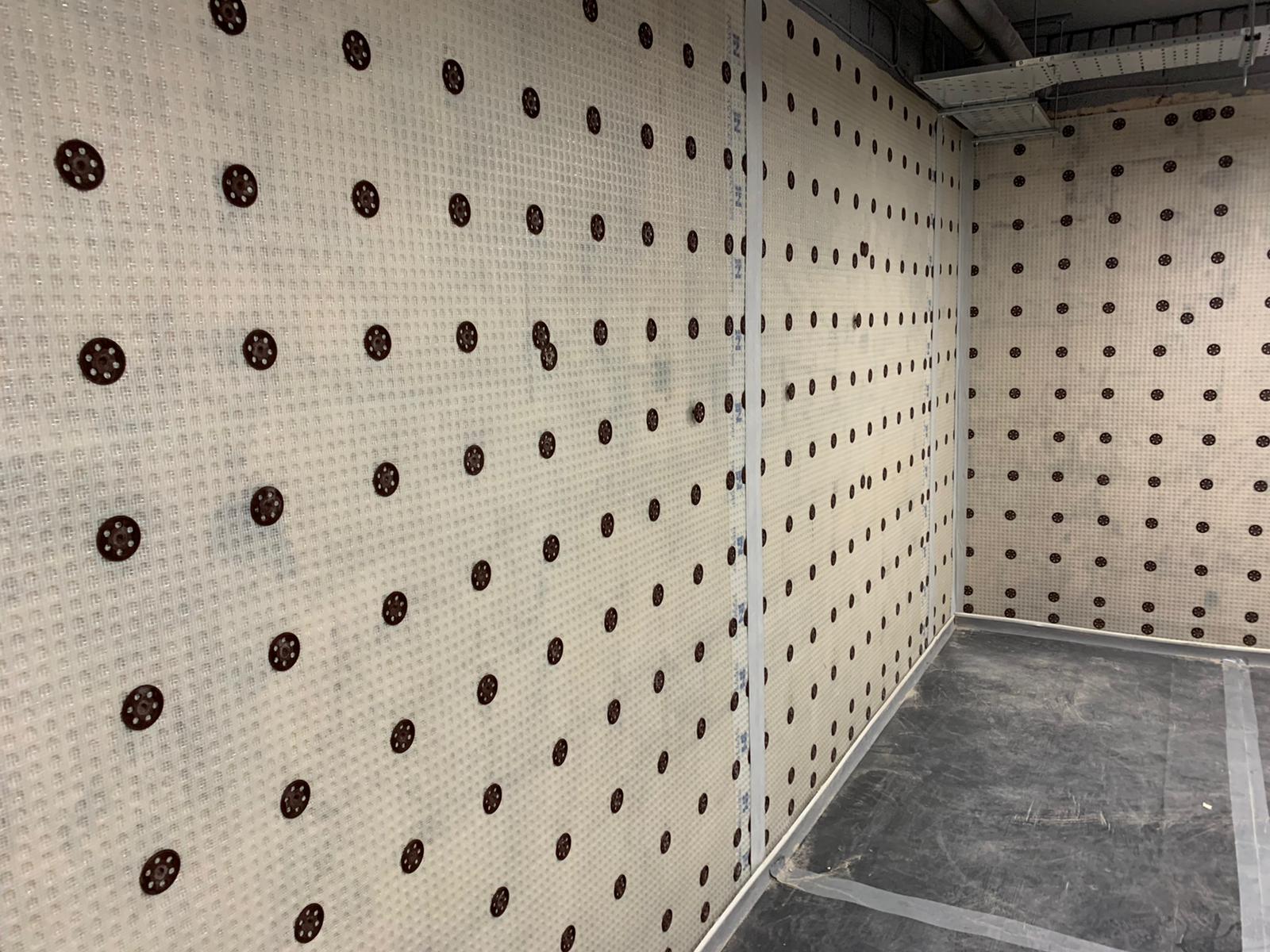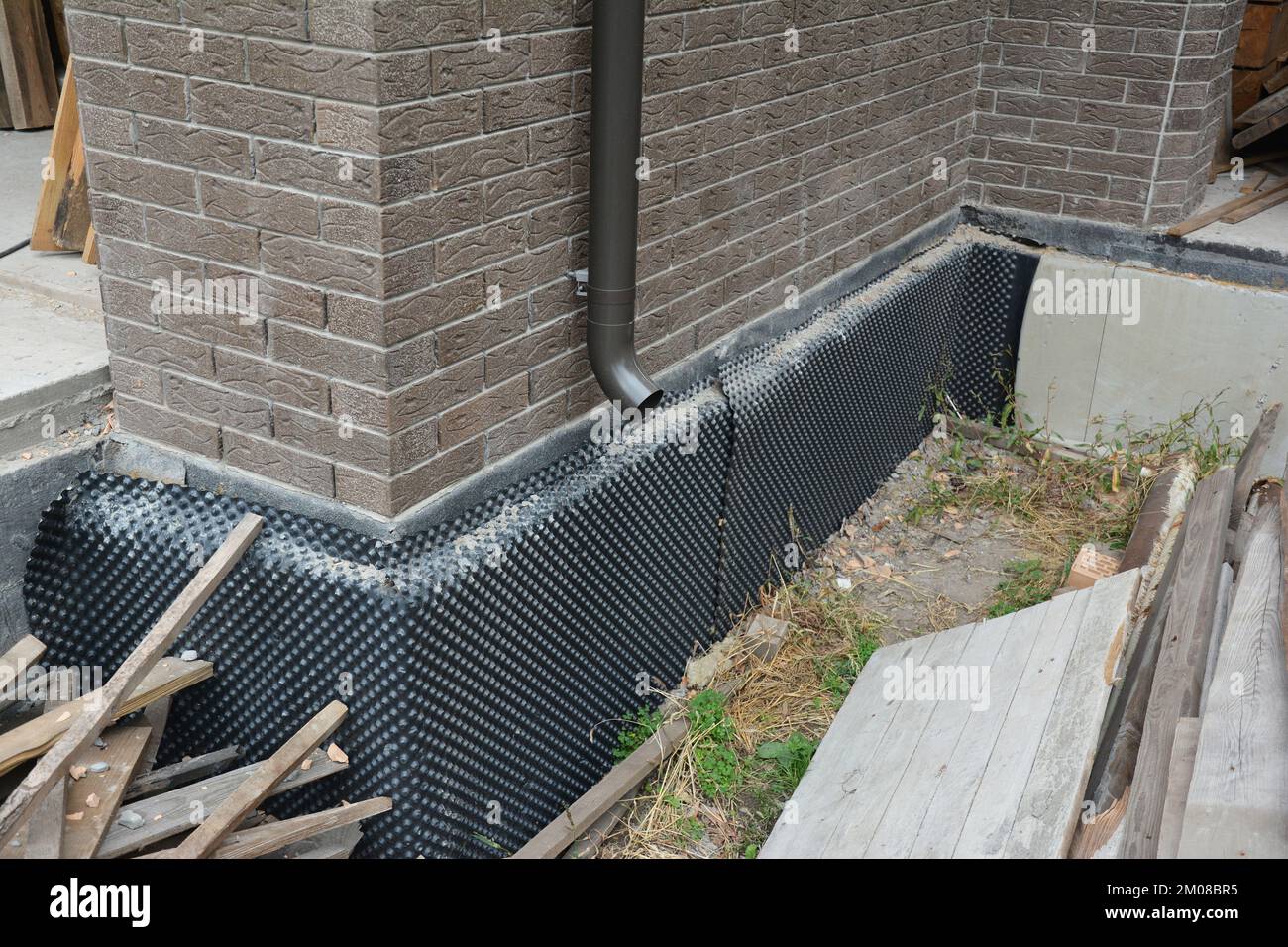Prevent structural damage with proactive damp removal newcastle
Prevent structural damage with proactive damp removal newcastle
Blog Article
Exploring the Numerous Techniques and Solutions for Effective Damp Proofing
Moisture in structures positions considerable obstacles to both architectural integrity and indoor air top quality. Various techniques and services have actually arised to combat this pervasive issue. From standard damp-proof membrane layers to cutting-edge chemical therapies, each approach supplies unique benefits. Understanding these choices is essential for efficient wetness control. However, selecting the best solution relies on details structure conditions and demands, prompting more exploration right into one of the most effective wet proofing strategies readily available.
Recognizing the Root Causes Of Wetness
Although wetness can arise from various resources, understanding these causes is essential for reliable remediation. Generally, dampness originates from 3 primary resources: climbing moist, penetrating damp, and condensation. Climbing damp happens when groundwater takes a trip up-wards via permeable products, such as brick or stone, frequently due to an absence of an efficient obstacle (damp proofing newcastle). Passing through damp is generally brought on by exterior aspects, consisting of roofing leakages, malfunctioning gutters, or damaged walls, permitting water to penetrate a home. Condensation, on the various other hand, results from excess wetness in the air, frequently intensified by poor air flow and temperature differences, leading to water beads basing on surfaces. Determining these underlying issues is crucial, as each sort of dampness calls for a customized strategy for removal. Appropriate analysis helps in establishing one of the most effective options, inevitably protecting the architectural honesty of a building and improving interior air top quality
Conventional Damp-Proof Membranes

Chemical Damp-Proofing Solutions
Chemical damp-proofing options provide a cutting-edge strategy to stop moisture breach in buildings. These approaches generally entail the application of fluid chemicals that pass through stonework and create an obstacle against increasing damp. Commonly made use of chemicals consist of silanes, siloxanes, and various other water-repellent agents that react with surface materials to produce a hydrophobic layer.The application process usually requires drilling holes right into the walls, injecting the chemical solution, and enabling it to heal. This technique is specifically advantageous for older structures where traditional damp-proof membranes may be impractical. Chemical damp-proofing can be less disruptive and much more economical than considerable renovation projects.While efficient, these solutions depend on proper application and ecological problems for peak efficiency. damp proofing newcastle. Routine maintenance and surveillance are essential to assure the longevity of the damp-proofing therapy. Generally, chemical damp-proofing stands for a versatile alternative for safeguarding structures versus moisture-related damages
Tooth Cavity Wall Surface Building Strategies
Tooth cavity wall building techniques offer countless benefits, especially in wetness control and energy performance. By including an air gap between two layers of stonework, these wall surfaces properly alleviate water ingress while improving insulation. This combination not only shields structures from moisture yet likewise adds to reduced power consumption.
Benefits of Tooth Cavity Wall Surfaces
When taking into consideration efficient moist proofing methods, the benefits of tooth cavity walls stick out prominently. Tooth cavity walls are composed of two separate layers, producing an air void that efficiently decreases wetness penetration. This layout decreases the threat of dampness, as the external wall surface functions as a barrier versus rain and water access. Furthermore, dental caries wall surfaces boost thermal insulation, which adds to power effectiveness by minimizing warm loss. They additionally provide audio insulation, aiding to produce a quieter indoor environment. Furthermore, the air space enables for air flow, which assists in dampness control and minimizes the possibility of mold and mildew development. These advantages not just improve the overall convenience of a structure however additionally add to its longevity and structural integrity.
Moisture Control Methods
Reliable wetness control strategies are important in cavity wall surface building to ensure long-term security against dampness. One key approach entails the unification of weep holes, which assist in water drainage from the dental caries, protecting against build-up. Additionally, using breathable membrane layers can aid handle dampness levels while enabling entraped vapor to leave. Correct placement of insulation is additionally crucial, as it needs to not block drainage courses. Furthermore, guaranteeing that the outer fallen leaves of the tooth cavity wall are created with water-resistant products improves general durability. Routine upkeep checks are important to recognize any obstructions or damages early, safeguarding the framework's honesty. Inevitably, a combination of these methods forms a robust defense against moisture intrusion in cavity walls.
Insulation and Energy Performance
Insulation plays an important function in enhancing power performance within dental caries wall surface construction. By incorporating insulating materials, these wall surfaces develop a thermal obstacle that lessens warmth loss and reduces energy intake. Reliable insulation not just assists preserve a stable indoor temperature level yet also alleviates the risk of dampness, as it prevents condensation within the wall surface dental caries. Different techniques, such as the usage of rigid foam boards or mineral woollen, can be utilized to achieve perfect insulation performance. In addition, appropriate installation is important to ensure that spaces and gaps are decreased, which can or else compromise power effectiveness. Ultimately, a well-insulated dental caries wall adds substantially to general sustainability and lowers cooling and heating costs for property owners.
Outside Damp Proofing Approaches
Outside damp proofing methods are important for shielding structures from dampness infiltration. 2 effective strategies include the application of water-proof membranes and the installment of French drains. These options help minimize water accumulation and preserve the honesty of structures.
Waterproof Membrane Layer Application
While numerous methods exist for preventing moisture ingress, the application of water resistant membrane layers continues to be an extremely effective external moist proofing method. These membranes are usually made from materials such as polyethylene, rubber, or changed bitumen, providing a durable obstacle versus water infiltration. The installation process includes applying the membrane website layer to the external surface areas of wall surfaces or structures, making sure complete coverage to stop leaks. Proper bond and securing at joints are crucial to maximizing performance. Waterproof membrane layers can be used in numerous types, including fluid finishings and sheet membrane layers, enabling for flexibility based on the specific requirements of the framework. This approach not just shields structures from wetness yet likewise improves their long life and architectural integrity.
French Drain Installment
One effective method for taking care of groundwater and stopping moisture accumulation around a structure's foundation is the installation of a French drain. This drainage system contains a trench loaded with gravel and a perforated pipe that reroutes surface water far from the structure. Correct installment calls for cautious planning, making sure that the drain inclines far from the framework to assist in suitable water flow. In addition, the place of the drainpipe is essential; it ought to be positioned in locations vulnerable to pooling or excess wetness. Regular upkeep, including cleaning particles from the crushed rock and making sure the pipe continues to be unblocked, is important for lasting effectiveness. Eventually, a well-installed French drainpipe can considerably reduce the danger of water-related concerns in structures and basements.
Inside Waterproofing Techniques
Inside waterproofing methods are important for protecting a building's interior from wetness infiltration and possible water damages. These methods normally involve the application of specific materials and methods created to develop a moisture barrier within the framework. One usual strategy is using waterproof finishes or sealers on wall surfaces and floors, which avoid wetness from penetrating surfaces.Additionally, mounting indoor drainage systems, such as sump pumps, can efficiently handle water build-up in basements and crawl spaces. Another technique involves the usage of vapor barriers, which are set up to hinder wetness motion from the ground into living spaces.Moreover, resolving any kind of splits or voids in walls or structures with appropriate sealants ensures a thorough defense against water invasion. By applying these indoor waterproofing methods, property proprietors can considerably minimize the danger of mold and mildew growth, architectural damages, and various other moisture-related issues. Proper implementation of these methods is important for long-term protection and building stability.
Regular Upkeep and Assessment Practices
Normal upkeep and evaluation practices are important for ensuring the lasting performance of damp proofing services in any type of structure. Routine checks make it possible for building proprietors to identify early signs of dampness breach, such as peeling paint, mold and mildew growth, and mildewy smells. These indicators can signify underlying problems that call for instant attention.Inspections should be performed a minimum of each year, concentrating on prone areas like cellars, crawl rooms, and exterior wall surfaces. During these analyses, building owners ought to examine sealers, water drainage systems, and air flow to validate they work correctly.Additionally, preserving gutters and downspouts is essential, as blocked systems can lead to water build-up near the foundation. Implementing a regular maintenance timetable, along with timely fixings, can considerably extend the lifespan of moist proofing actions and secure the architectural stability of the building. Positive steps eventually add to the general wellness and security of the living environment.
Often Asked Concerns
How Much Time Does Damp Proofing Normally Last?
The duration of damp proofing effectiveness varies, usually lasting between 20 to 50 years. Aspects such as application top quality, environmental conditions, and maintenance methods greatly influence the durability of the moist proofing treatment.

Can I Damp Proof My Home Myself?
The individual contemplated the expediency of DIY damp proofing. With correct research and the right products, it is feasible. Nevertheless, they also recognized the relevance of professional advice to assure lasting efficiency and protect against future problems.
What Are the Signs of Inadequate Damp Proofing?
Indicators of inefficient damp proofing consist of relentless musty smells, noticeable mold and mildew growth, peeling paint, damp spots on walls, and timber decay - damp proofing newcastle. House owners must deal with these problems quickly to avoid additional damages and health and wellness concerns
Does Damp Proofing Affect Indoor Air Top Quality?

Just How Much Does Expert Damp Proofing Price?
Expert wet proofing costs vary considerably, typically ranging from $1,000 to $5,000 relying on the residential property's size, the extent of the moist issue, and chosen techniques. Each circumstance calls for a customized assessment for precise rates. Commonly, moisture stems from 3 main resources: climbing moist, permeating wet, and condensation. When thinking about effective moist proofing techniques, the benefits of cavity walls stand out prominently. External wet proofing techniques are necessary for safeguarding frameworks from moisture seepage. While numerous approaches exist for avoiding wetness ingress, the application of water resistant membrane layers remains an extremely reliable exterior wet proofing strategy. Indicators of inadequate wet proofing consist of relentless moldy smells, visible mold development, peeling off paint, wet spots on walls, and timber decay.
Report this page